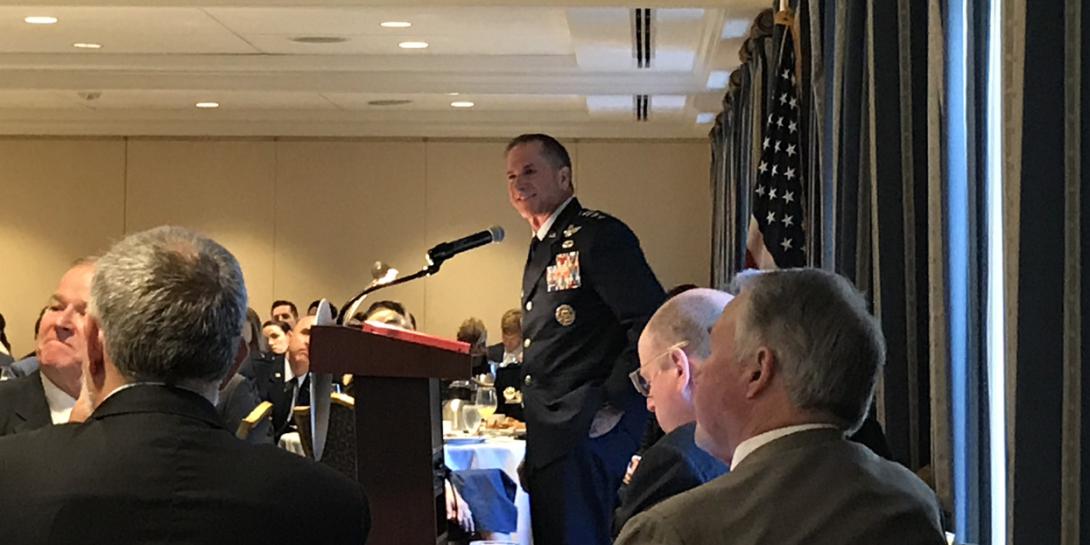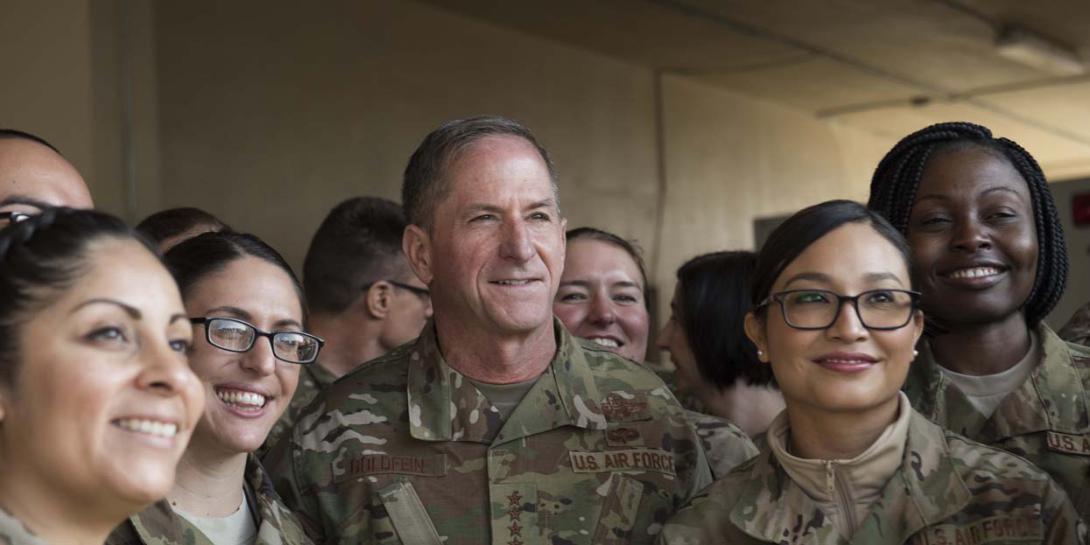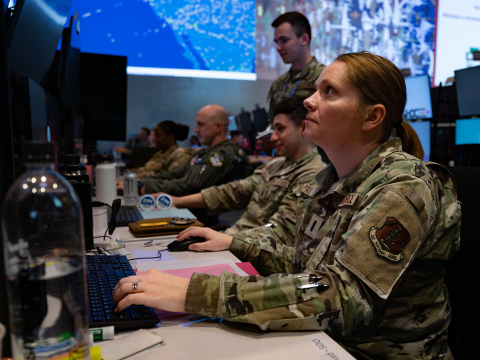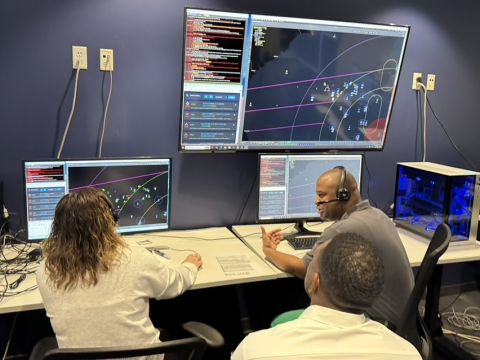U.S. Requires an Updated Nuclear Triad and Advanced Communication Systems
With Russia and China pursuing “rapid and comprehensive” nuclear weapon modernization efforts, instead of denuclearization, the United States must remain vigilant in its commitment to update its defensive tools to protect the nation, said Gen. David Goldfein, USAF, chief of staff of the Air Force.
The chief of staff spoke at the Mitchell Institute’s Strategic Deterrence Breakfast Series on June 26. He confirmed the necessity of the United States’ nuclear deterrence triad, the combination of intercontinental ballistic missiles (ICBMs), ballistic missile submarines and the aircraft bomber fleet, which serve as the backbone of our national security.
“As chief, when I contemplate and think about the Air Force the nation needs to accomplish these missions and our nuclear missions side-by-side with our joint teammates and our allies and partners, I always start with an assessment of the threat,” Gen. Goldfein stated.
Russia remains the most dangerous nuclear threat to the United States, the Joint Chief attested. And while the United States has continued to reduce its number of nuclear weapons, Russia, China and other countries “have moved in the opposite direction,” he stressed.
“We're not interested in pursuing a repeat of the Cold War, but we have to recognize that our adversaries have not reciprocated our commitment to reducing the potential role of nuclear weapons in war,” Gen. Goldfein noted.
Russia’s program, which started in 2006, is focusing on advancing their land and sea-based strategic missile forces, as well as their airborne cruise missiles designed to evade U.S. detection, the general emphasized.
“They've also doubled down on their lower-yield weapons, and they'll be close to completing the modernization of their triad by about 2020, which is about the time we will begin our journey,” he noted.
In addition, both Russia and China are taking “a more aggressive posture” in the Arctic region, especially along the Northern approaches to the United States and Canada. “And most concerning is the open declaration by Russian Chief of Defense [Valery Gerasimov] of their intent to use nuclear weapons early in any conflict,” Gen. Goldfein stated.
For the Air Force itself, the Joint Chief continued to argue for a larger service. “The force today is a third smaller than the force needed in 1991 to oust Iraq, a nonnuclear, middleweight country from Kuwait,” he noted. “I think this is one of the reasons that the Commission on the National Defense Strategy came to the conclusion that regardless of the operation or the location, the Air Force will be central to any operation. And that is why the secretary and I have continually stated and testified that the Air Force today is too small for what the nation is asking us to do.”
In addition, the service will greatly rely on an updated nuclear command, control and communications system (NC3) to control any modernized components of the U.S. triad. The military stood up the Nuclear Command, Control and Communications Enterprise Center, or NEC, in April. Gen. John Hyten, commander of the U.S. Strategic Command, is the operational commander for the NEC, which is aimed at modernizing the situation monitoring, decision making, force direction, force management and planning for NC3, according to the Air Force.
“That was a very important step, so we have a single individual who is responsible for the overall architecture and pulling that together,” said Gen. Goldfein, commenting on Gen. Hyten’s role.
And while the Joint Chief was not able to provide any timelines as to the NEC’s next steps, he did speak of its importance. “The work that we're doing in connecting the force and building a network force across the services on the conventional side has got equal application to the nuclear command and control side,” Gen. Goldfein stated. “Because at the end of the day, what we need is a resilient, capable architecture that keeps the commander in chief connected.”
Gen. Goldfein added that the service will be looking to “significantly leverage the rapid and exciting expansion of commercial space,” including “bringing low-earth-orbit capabilities that allow us to have resilient pathways to communicate.”
And despite the Iranian downing of a key U.S. surveillance tool, a RQ-4A Global Hawk unmanned aircraft system, reportedly over the Strait of Hormuz, the military will continue to “fly where we need,” in international airspace, Gen. Goldfein noted.
“This is a conversation we can have in the South China Sea,” he said. “This is a conversation we can have anywhere in terms of international airspace. We will continue to protect those global commons for everyone, and we will operate where we need to operate. I don't see a significant change in capabilities there. At the end of the day, my job as a Joint Chief is to ensure that we are presenting executable options.”






Comments